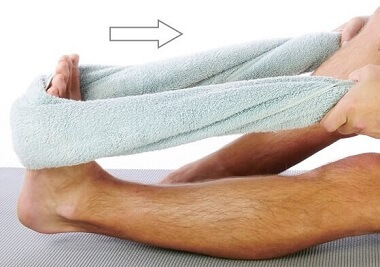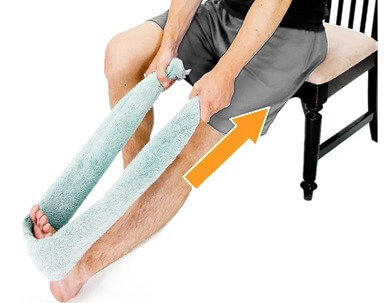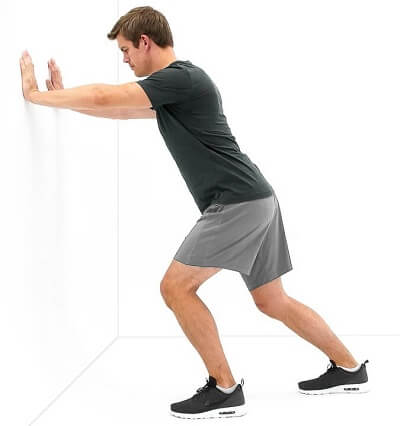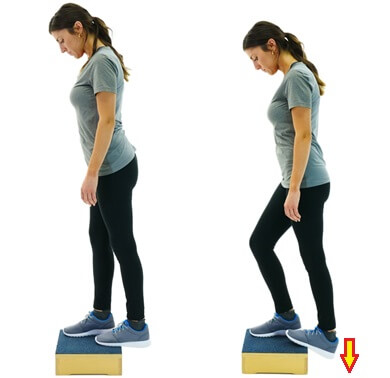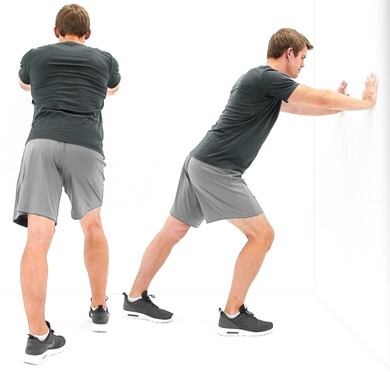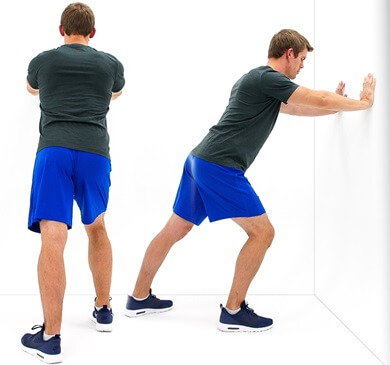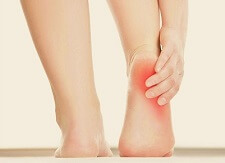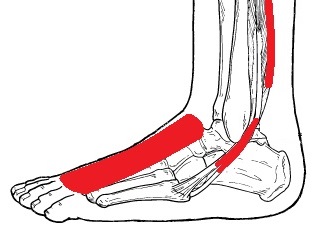- Home
- Foot & Ankle Exercises
- Calf Stretches
Calf Stretches
Written By: Chloe Wilson BSc(Hons) Physiotherapy
Reviewed By: FPE Medical Review Board
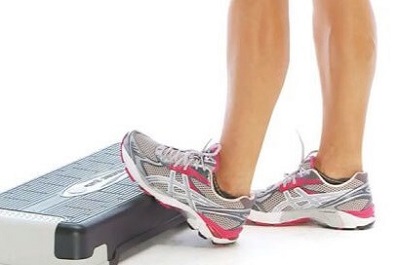
Calf stretches are a vital part of rehab for a whole range of foot and ankle problems.
Tightness in the calf can affect the position of the foot, the way it moves and our balance. It is a common cause of both foot pain and knee pain.
The calf is formed by two muscles that work together to pull the toes down. Their main function is lifting the foot during the push-off phase of walking and running so calf problems are particularly prevalent in athletes and runners.
Calf stretches help to reduce pain, tightness and instability. They also help to reduce the risk of injury or conditions such as Achilles Tendonitis, Plantar Fasciitis and Cramp.
Here, we will start by looking at how to stretch both of the calf muscles effectively and how to get the best results from stretching exercises with the minimum effort. We will then look at each of the muscles in a bit more depth and how they work.
How To Get The Best Results
Before we get started, let's have a quick look at how to get the best results from stretches. Calf stretches are simple, but in order to be effective, there are a few guidelines to follow:
- Hold For Longer: Studies have shown the most effective way to stretch is to hold calf stretches for thirty seconds. This gives the muscle fibers time adequate time to relax. Any less than 30 seconds and there will be minimal changes in muscle length
- Repetitions: You get the best results if you repeat calf stretches at least three times. Any less and stretches will have minimal effect. Also, doing more than three reps will give minimal extra benefit
- Take The Pain: Calf stretches should be uncomfortable, but not painful. Any discomfort felt should stop as soon as you stop stretching. Effective stretching isn’t particularly pleasant!
- Stay Safe: Calf stretches should not be done immediately following an injury e.g. calf tear as it can cause further damage. You should be able to push down through your toes against moderate resistance without pain before you commence calf stretches. Always consult your doctor before commencing an exercise programme after injury.
- Correct Position: Due to the anatomy of the calf muscles you have to stretch
each calf muscle separately. Gastrocnemius stretches tend to feel stronger than Soleus stretches.
Soleus: this calf muscle starts just below the knee so is stretched with the knee bent
Gastrocnemius: this calf muscle starts above the knee so the knee needs to be straight when stretching it. The top of the muscle comes from two different places, known as the medial (inner) and lateral (outer) heads. Gastrocnemius calf stretches can be done as a whole unit, or can be performed to bias the two different heads
Top 7 Calf Stretches
Here you will find seven different ways to stretch the calf muscles. You don't need to do them all, pick your favourite two or three calf stretches and do those - number 5 is my favourite!
1. Lying Calf Stretch
Starting Position: Sit on the floor with the leg to be stretched straight out in front of you. Place a towel or belt around the ball of your foot and hold the ends
Action: Draw your toes and foot up towards you, and pull through the towel to increase the flexion at your ankle until you feel a strong stretch in the back of your calf
Repetition: Hold for
30 seconds, repeat 3 times
Variations: To stretch your gastrocnemius muscle, keep your
knee straight as you do this exercise.
To stretch Soleus, bend your knee slightly
2. Seated Calf Stretch
Starting Position: Sit in a chair with the leg to be stretched straight out in front of you. Place a towel or belt around the ball of your foot and hold the ends. Sit up tall
Action: Pull your toes and ankle up towards you and pull through the towel to increase the stretch in the back of your calf
Repetition: Hold for 30 seconds and repeat 3 times
Top Tips: a. To stretch your gastrocnemius muscle, keep your
knee straight as you do this exercise.
b. To stretch Soleus, bend your knee slightly (about 20 degrees)
c. Make sure you are sitting up tall as you do this exercise – not slumped
forwards
3. Standing Gastrocnemius Stretch
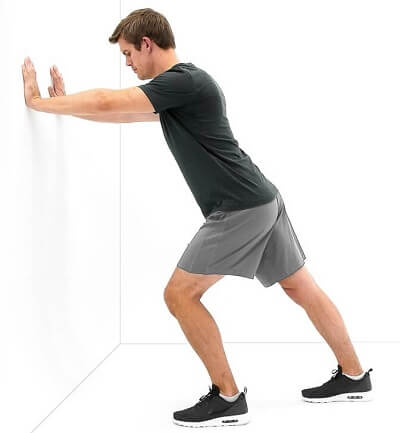
Starting Position: Stand facing a wall and step the leg to be stretched back behind you. Make sure your toes are pointing straight forwards.
Action: Keeping up tall and your back knee straight, lunge forwards onto your front leg until you feel a stretch in your calf muscle on the back leg.
Repetition: Hold for 30 seconds and repeat 3 times
Notes: a. Ensure you keep your back up straight and tall
rather than bending forwards
b. Keep your back knee straight and your heel on the floor
c. Check your toes are pointing directly forwards, not out to the side – often
it feels like they are straight but when you look they are actually turned out slightly
4. Standing Soleus Stretch
Starting Position: Stand facing a wall and step the leg to be stretched back behind you. Make sure your toes are pointing straight forwards
Action: Bend the back knee slightly and, keeping up tall, lean into the wall until you feel a stretch in your calf muscle on the back leg.
Repetition: Hold for 30 seconds and repeat 3 times
Notes: a. Ensure you keep your back up straight and tall
rather than bending forwards
b. Keep your back knee slightly bent and your heel on the floor
c. Again, check your toes are pointing directly forwards, not out to the side
5. Calf Stretch On A Step: Top Stretch!
Starting Position: Stand on a step with the heel of the leg to be stretch resting off the back of the step. This is my favourite of the calf stretches
Action: Drop the heel down by slightly bending the other knee until you feel a stretch in your calf
Repetition: Hold for 30 seconds and repeat
3 times
Notes: a. To stretch gastrocnemius, keep
the knee straight throughout
b. To stretch soleus, bend the back knee
slightly during these calf stretches
c. If you are doing the exercises on the
stairs, you may find you get more of a stretch if you have your other foot on a
higher step
6. Outer Calf Stretch
Purpose: Stretches the lateral head of gastrocnemius (the outer side)
Starting Position: Stand leaning on a wall
with the leg to be stretched back behind you
Action: Turn your toes inwards and then lean forwards until you feel a stretch in the back of your calf, mainly on the outer side
Repetition: Hold for 30 seconds and repeat
3 times
Notes: Ensure your knee is straight and you
are keep your upper body upright when you do calf stretches
7. Inner Calf Stretch
Purpose: Stretches the medial head of
gastrocnemius (the inner side)
Starting Position: Stand leaning on a wall
with the leg to be stretched back behind you
Action: Externally rotate the leg (turn it
outwards) at the hip and then lean forwards until you feel a stretch in the
back of your calf, mainly on the inner side
Repetition: Hold for 30 seconds and repeat
3 times
Notes: Ensure your knee is straight and you
are standing up tall
How Do the Calf Muscles Work?
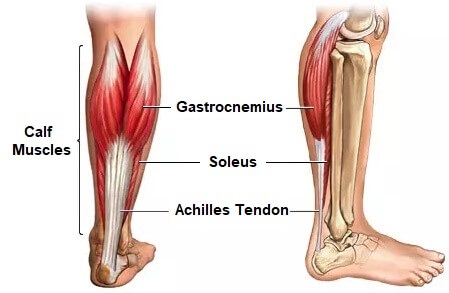
The calf is comprised of two muscles, gastrocnemius and soleus. They start at the knee, travel down the back of the calf where they join together to form the Achilles tendon which attaches to the back of the heel.
Gastrocnemius comes from just above the knee whereas soleus starts just below the knee. As a result, we have to stretch them both in slightly different ways to be effective.
The calf muscle works to pull the foot downwards (plantarflexion) and stabilise the ankle. As we walk, run and jump, the calf muscle pulls the heel up to give us power we need to push up off the ground. Calf stretches ensure the muscles can work most efficiently.
What Else Can Help?
Calf stretches are great for improving the flexibility in your foot and ankle, but it is also really important to have good strength in your calf too. A good test is, can you stand on one leg and easily rise up and down onto your tip toes thirty times? If that feels challenging, visit the calf workout section for simple ways to improve the strength and endurance of your calf muscles.
You may also benefit from stretching out the rest of the foot too - visit the ankle stretches section for more exercises that can help reduce foot, ankle, calk and knee pain, or the exercises for heel pain section.
If you need help working out what is causing your pain, visit the foot pain diagnosis section or visit our sister site on knee pain.
Related Articles
Page Last Updated: 7th November, 2025
Next Review Due: 7th November, 2027
